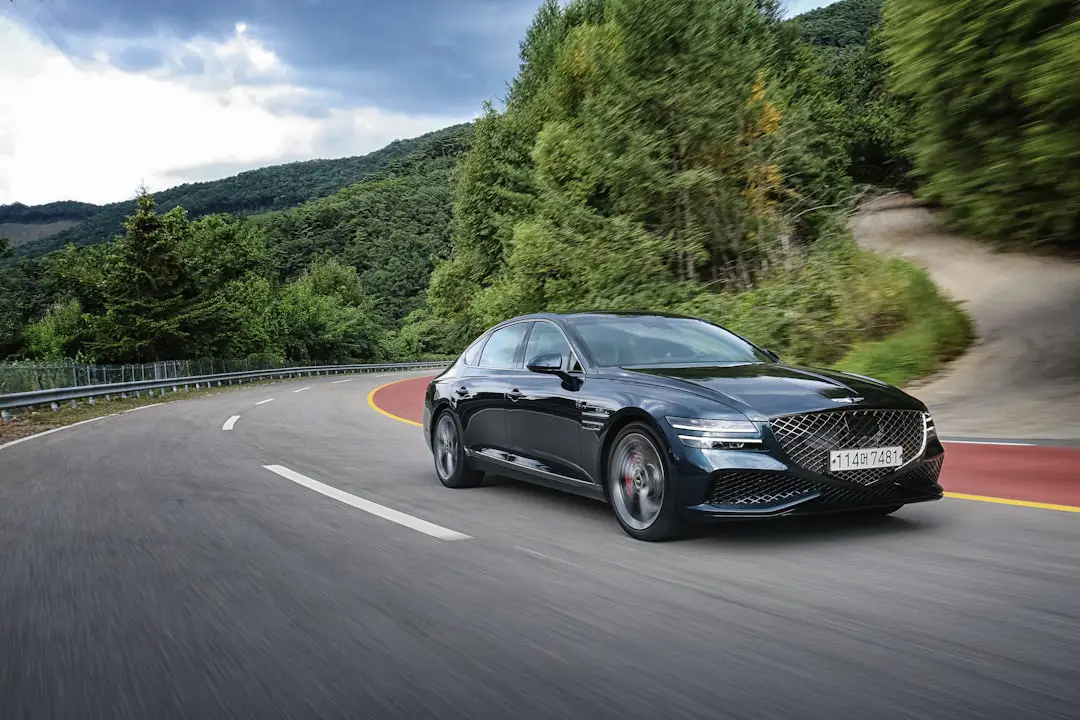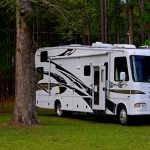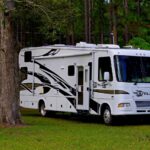
Picture this: a vibrant community of road warriors ranging from adventurous Millennials in sleek camper vans to retirees cruising in luxury Class A motorhomes. The face of RVing is changing fast, and if you think it’s just retirees with fishing poles, think again! In fact, the average age of RV owners has dropped to 49, with younger generations and diverse families hitting the highways in record numbers. Curious who’s really behind the wheel and what’s driving this boom? Buckle up, because we’re diving deep into the fascinating demographics of RVers in 2025 — and revealing insights that could change how you think about life on the road.
From gender shifts to income brackets, from geographic hotspots to lifestyle motivations, this comprehensive guide covers it all. Whether you’re a seasoned RVer or just RV-curious, understanding these trends will help you navigate the RV world with confidence and maybe even inspire your next adventure!
Key Takeaways
- Millennials and Gen Xers now dominate RV ownership, pushing the average age down and bringing fresh energy to the lifestyle.
- Women are increasingly influential in RV purchases and solo travel, reshaping the community’s dynamic.
- Diversity is growing, with more families from various ethnic backgrounds embracing RVing.
- Income levels vary widely, making RVing accessible through options like camper vans and travel trailers.
- Popular RV types differ by demographic, from luxury Class A motorhomes for retirees to camper vans for solo Millennials.
- Technology and social media play a huge role in trip planning, community building, and remote work on the road.
- Challenges like affordability and accessibility remain, but the industry is evolving to meet these needs.
Ready to explore the perfect RV for your lifestyle? Check out these popular categories:
- 👉 Shop Class A Motorhomes on: RVShare | Camping World | Tiffin Motorhomes Official
- 👉 Shop Camper Vans on: RVShare | Camping World | Winnebago Official
Table of Contents
- Quick Tips and Facts About RVers Demographics 🚐💡
- The Evolution of RVing: A Demographic Journey Through Time 🕰️
- Age Breakdown: Who’s Hitting the Road? 👵🧑🎤
- Gender and RVing: Are Women Taking the Wheel? 🚺🚹
- Income Levels and RV Ownership: Who Can Afford the Adventure? 💰🏕️
- Family Status and RVing: Solo Travelers, Couples, and Family Fun 👨👩👧👦
- Geographic Hotspots: Where Do RVers Call Home? 🗺️🏡
- Types of RVs Preferred by Different Demographics 🚍🛻
- Lifestyle and Motivations: Why Different Demographics Choose RVing 🌄❤️
- Technology and Social Media Influence on Modern RVers 📱🌐
- Challenges and Barriers: What’s Holding Some Demographics Back? 🚧❌
- Future Trends: How Demographics of RVers Are Shifting 🚀🔮
- Conclusion: What These Demographics Mean for the RV Industry and You 🎯
- Recommended Links for Deep Dives and Data Sources 🔗
- FAQ: Your Burning Questions About RVers Demographics Answered ❓🔥
- Reference Links: Trusted Studies and Reports on RVers Demographics 📚
Quick Tips and Facts About RVers Demographics 🚐💡
- RVs aren’t just for retirees anymore! The average age of RV owners is decreasing, with Millennials and Gen Xers leading the charge. (Source)
- Women are a growing force in the RV world. Nearly half of all Class A motorhome owners are women! (Source)
- Diversity is booming in the RV community. More families from diverse ethnic backgrounds are embracing the RV lifestyle. (Source)
- The RV lifestyle is more attainable than you might think. Affordable options like camper vans and small trailers are making RVing accessible to a wider range of budgets. (Source)
- RVers are adventurers at heart. The top motivators for RVing are relaxation, spending time in nature, and exploring scenic destinations. (Source)
The Evolution of RVing: A Demographic Journey Through Time 🕰️
Remember the days when RVs were synonymous with retirees hitting the open road after decades of hard work? Well, the RV landscape has transformed! While retirees still make up a significant portion of RVers, a new generation of adventurers is driving change.
From Nomadic Retirees to Adventurous Millennials
The rise of remote work, a desire for flexible lifestyles, and the allure of affordable travel options have attracted younger generations to the RV world. Millennials and Gen Xers, known for their wanderlust and tech-savviness, are reshaping the image of the “typical” RVer.
Diversity Takes the Wheel
The RV community is also becoming increasingly diverse. Families from various ethnic backgrounds are finding joy in RV travel, reflecting a broader societal shift towards inclusivity and representation. This surge in diversity brings fresh perspectives and experiences to campgrounds and RV parks across the nation.
Women Steer the RV Revolution
Gone are the days when RVing was considered a male-dominated hobby. Women are embracing RV travel in record numbers, whether they’re embarking on solo adventures, planning family vacations, or hitting the road with their partners. This shift highlights the empowering and liberating nature of RVing, appealing to individuals of all genders.
Age Breakdown: Who’s Hitting the Road? 👵🧑🎤
Let’s dive into the numbers and see how age groups stack up in the RV world:
- Millennials (born 1981-1996): Making up the largest segment of RV buyers, Millennials are drawn to the freedom and flexibility of RV travel. They often prioritize experiences over material possessions and see RVs as a way to explore new destinations and embrace alternative lifestyles.
- Gen Xers (born 1965-1980): As many Gen Xers enter their peak earning years and approach retirement, they’re increasingly investing in RVs. They appreciate the comfort and convenience of RVs for family vacations and extended trips.
- Baby Boomers (born 1946-1964): While no longer the dominant force they once were, Baby Boomers still hold a significant presence in the RV community. Many enjoy their retirement years by traveling the country in their RVs, visiting family and friends, and pursuing hobbies.
Gender and RVing: Are Women Taking the Wheel? 🚺🚹
The answer is a resounding YES! Women are breaking down stereotypes and embracing RVing like never before. Here’s a glimpse into the growing influence of women in the RV world:
- Decision-Makers: Women are increasingly involved in the decision-making process when purchasing an RV. They’re researching different models, comparing features, and considering how an RV will fit their family’s needs.
- Solo Travelers: More women are choosing to embark on solo RV adventures, seeking freedom, self-discovery, and the opportunity to explore at their own pace.
- Online Communities: Women are actively engaging in online RV communities, sharing tips, advice, and stories from the road. These communities provide a supportive space for women to connect, learn, and inspire each other.
Income Levels and RV Ownership: Who Can Afford the Adventure? 💰🏕️
While RVing does require a financial investment, it’s not just a luxury for the wealthy. People from various income levels find ways to make their RV dreams a reality. Here’s a breakdown of how income can influence RV ownership:
- High-Income Earners: Individuals and families with higher incomes may opt for luxurious Class A motorhomes or spacious fifth wheels, equipped with high-end amenities and features. They might enjoy extended trips and frequent travel to luxurious RV resorts.
- Middle-Income Earners: Many middle-income earners find that RVing is an affordable alternative to traditional vacations. They might choose smaller RVs, such as Class C motorhomes, travel trailers, or camper vans, which offer a balance of comfort and affordability.
- Budget-Conscious RVers: Even those on a tight budget can experience the joys of RVing. Used RVs, DIY renovations, and creative camping strategies (like boondocking) allow budget-conscious individuals and families to enjoy RV travel without breaking the bank.
Family Status and RVing: Solo Travelers, Couples, and Family Fun 👨👩👧👦
RVing is a versatile lifestyle that appeals to people of all family dynamics:
- Solo Travelers: RVs provide solo adventurers with the freedom to roam wherever the road takes them. They can connect with nature, meet new people, and enjoy the solitude of the open road.
- Couples: RVing offers couples a unique way to strengthen their bond and create lasting memories. They can explore romantic destinations, share adventures, and enjoy quality time together.
- Families: RVs provide families with an opportunity to create unforgettable experiences together. Kids love the adventure of RV travel, and parents appreciate the quality time and bonding opportunities that RV trips provide.
Geographic Hotspots: Where Do RVers Call Home? 🗺️🏡
While RVers can be found in every corner of the country, some states have particularly high concentrations of RV owners. These states often offer a combination of favorable factors, such as:
- Pleasant Climates: States with mild winters and warm summers, like Florida, Arizona, and California, are popular destinations for RVers, especially those seeking to escape harsh weather conditions.
- Scenic Beauty: States renowned for their natural beauty, such as Colorado, Utah, and Montana, attract RVers who enjoy outdoor recreation and breathtaking landscapes.
- RV-Friendly Infrastructure: States with well-maintained campgrounds, RV parks, and highways make it convenient and enjoyable to travel and camp in an RV.
Types of RVs Preferred by Different Demographics 🚍🛻
The type of RV that best suits an individual or family often depends on their specific needs, preferences, and travel style. Here’s a look at some popular RV types and the demographics that gravitate towards them:
- Class A Motorhomes: These luxurious RVs, often resembling tour buses, are popular among retirees and high-income earners who prioritize spacious living areas, high-end amenities, and long-distance travel.
- Class C Motorhomes: More compact and maneuverable than Class As, Class C motorhomes are a popular choice for families and couples seeking a balance of comfort, affordability, and ease of driving.
- Travel Trailers: Available in a wide range of sizes and floor plans, travel trailers offer versatility and affordability, making them a popular choice for families, couples, and solo travelers alike.
- Fifth Wheels: Offering more living space than travel trailers, fifth wheels are often favored by full-time RVers and families who desire a home-like atmosphere on the road.
- Camper Vans: Compact, fuel-efficient, and easy to drive, camper vans are gaining popularity among Millennials, solo travelers, and those seeking a minimalist approach to RVing.
Lifestyle and Motivations: Why Different Demographics Choose RVing 🌄❤️
What drives people to embrace the RV lifestyle? The motivations are as diverse as the RVers themselves:
- Freedom and Flexibility: RVing provides unparalleled freedom to travel at your own pace, change plans on a whim, and explore off-the-beaten-path destinations.
- Connection with Nature: RVers often seek out destinations renowned for their natural beauty, enjoying outdoor recreation, breathtaking scenery, and the tranquility of nature.
- Adventure and Exploration: The open road calls to those with a thirst for adventure. RVers embrace the unknown, discover hidden gems, and create unforgettable memories along the way.
- Quality Time with Loved Ones: RVing provides a unique opportunity to disconnect from the distractions of everyday life and reconnect with loved ones. Families and couples cherish the quality time and shared experiences that RV trips offer.
- Affordable Travel: RVing can be a more affordable alternative to traditional vacations, especially for families and those who travel frequently.
Technology and Social Media Influence on Modern RVers 📱🌐
Technology and social media have significantly impacted the RV world, influencing everything from trip planning and navigation to community building and sharing experiences:
- Trip Planning Apps: Apps like RV Trip Wizard, Roadtrippers, and Campendium make it easier than ever to plan RV routes, find campgrounds, and discover points of interest along the way.
- Navigation Systems: RV-specific GPS devices and navigation apps help RVers navigate safely and efficiently, considering factors like road closures, low bridges, and propane restrictions.
- Online Communities: Social media platforms, forums, and online groups connect RVers from all walks of life, fostering a sense of community, providing a platform for sharing tips and advice, and inspiring others to embrace the RV lifestyle.
- Remote Work and Connectivity: Advances in mobile internet technology have made it easier for RVers to stay connected on the road, allowing them to work remotely, stay in touch with loved ones, and share their adventures online.
Challenges and Barriers: What’s Holding Some Demographics Back? 🚧❌
While RVing offers numerous benefits, some challenges and barriers can hinder certain demographics from fully embracing the lifestyle:
- Affordability: The initial cost of purchasing an RV, as well as ongoing expenses like fuel, maintenance, and campground fees, can be a significant barrier for some individuals and families.
- Time Constraints: Work schedules, family obligations, and other commitments can make it challenging for some people to find the time for extended RV trips.
- Accessibility: Individuals with disabilities may face challenges finding RVs and campgrounds that meet their accessibility needs.
- Lack of Representation: While the RV community is becoming more diverse, some demographics, such as people of color and LGBTQ+ individuals, may still feel underrepresented or face challenges feeling welcome in certain RV spaces.
- Environmental Concerns: The environmental impact of RV travel, particularly fuel consumption and waste disposal, can be a concern for environmentally conscious individuals.
Conclusion: What These Demographics Mean for the RV Industry and You 🎯
So, what’s the big takeaway from this deep dive into the demographics of RVers? Simply put: the RV lifestyle is evolving and expanding like never before! From youthful Millennials and adventurous solo women to diverse families and seasoned retirees, the RV community is a vibrant mosaic of backgrounds, ages, and motivations. 🚐✨
The RV industry is responding by offering a wider variety of RV types—from sleek camper vans perfect for first-timers and solo travelers, to luxurious Class A motorhomes that cater to retirees and high-income buyers. This diversity in RV models reflects the changing face of RVers and their unique needs.
We also saw how technology and social media are fueling this growth, connecting RVers across the country and making the lifestyle more accessible and enjoyable. Yet, challenges like affordability and accessibility remain hurdles for some demographics, reminding manufacturers and communities to keep inclusivity and innovation front and center.
If you’re considering joining the ranks of RVers, now’s a fantastic time. Whether you’re a budget-conscious explorer eyeing a camper van or a family dreaming of a fifth wheel, there’s an RV out there tailored for you. And with more first-time buyers entering the scene, the RV lifestyle is more welcoming than ever.
Ready to hit the road? Keep exploring, keep learning, and remember: the open highway is calling your name! 🌄🚐
Recommended Links for Deep Dives and Data Sources 🔗
👉 Shop Popular RV Types on RVShare:
- Class A Motorhomes: RVShare Class A Search | Camping World Class A | Tiffin Motorhomes Official Website
- Class C Motorhomes: RVShare Class C Search | Camping World Class C | Winnebago Official Website
- Travel Trailers: RVShare Travel Trailers | Camping World Trailers | Airstream Official Website
- Fifth Wheels: RVShare Fifth Wheels | Camping World Fifth Wheels | Keystone RV Official Website
- Camper Vans: RVShare Camper Vans | Camping World Camper Vans | Winnebago Revel Official Website
Books on RVing and Lifestyle:
- The RV Handbook: Essential How-To Guide for the RV Owner by Dave Solberg — Amazon Link
- Full-Time RV Living: The Ultimate Guide to Life on the Road by Cherie Ve Ard — Amazon Link
- The Complete Idiot’s Guide to RVing by Brent Peterson and Jeannie Peterson — Amazon Link
FAQ: Your Burning Questions About RVers Demographics Answered ❓🔥

What is the average age of RV owners in the United States?
The average age of RV owners has been steadily decreasing. According to the 2025 Go RVing RV Owner Demographic Profile, the median age dropped from 53 in 2021 to 49 in recent years. Millennials (ages roughly 27-42) now make up the largest segment of RV buyers, followed closely by Gen Xers. This younger demographic shift is driven by factors like remote work flexibility and a desire for experiential travel.
Read more about “What’s the Average Age of RV Owners? 🚐 (2025)”
What percentage of RVers are full-time versus part-time travelers?
Most RV owners are part-time travelers, using their RVs primarily for vacations and weekend getaways. However, the number of full-time RVers is growing, especially among younger demographics and retirees seeking a mobile lifestyle. Estimates suggest around 10-15% of RV owners live in their RVs full-time, but this number is rising as more people embrace remote work and alternative living arrangements. For more on full-time RV living, check out our Full-Time RVing category.
What are the most common income levels among RVers?
Income levels among RV owners vary widely. High-income earners often gravitate toward luxury Class A motorhomes, while middle-income families and individuals prefer more affordable options like travel trailers and camper vans. According to the RVIA report, about 58% of employed Class A owners make over $65,000 annually, but many RVers fall into middle-income brackets, finding creative ways to make RVing affordable.
Do RVers tend to be married or single, and what are their typical family dynamics?
RVers come from all family structures. While retirees without children at home make up a large portion, younger families with children are increasingly entering the market. The 2025 RVIA profile notes that 43% of RV owners have children under 18 living in their household, up from 34% previously. Solo travelers and couples without children also represent significant segments, reflecting the lifestyle’s broad appeal.
What are the most popular types of RVs among different demographic groups?
- Millennials and Gen Xers: Camper vans and smaller travel trailers are popular for their affordability and maneuverability.
- Families: Fifth wheels and Class C motorhomes offer space and amenities suited for family travel.
- Retirees and High-Income Buyers: Luxurious Class A motorhomes with premium features are favored.
- Solo Travelers: Compact camper vans and Class B motorhomes provide convenience and ease of driving.
Read more about “How Will the RV Industry Grow in the Coming Years? 🚐 (2025)”
How do the demographics of RVers vary by region, such as urban versus rural areas?
RVers tend to cluster in states with favorable climates, scenic beauty, and RV-friendly infrastructure. Urban dwellers often seek RVs as a way to escape city life on weekends or extended trips, while rural residents may use RVs for seasonal travel or as mobile homes. States like Florida, Arizona, and California have high concentrations of RV owners, but interest is growing nationwide. The availability of campgrounds and RV parks also influences regional demographics.
What role do hobbies and interests play in the demographics of RVers, such as outdoor enthusiasts or retirees?
Hobbies are a major motivator for RV ownership. Outdoor activities like fishing, hiking, and water sports are popular among RVers of all ages. Retirees often RV to pursue hobbies and visit family, while younger RVers may combine travel with work or adventure sports. The rise of “boondocking” (off-grid camping) appeals to those seeking solitude and nature immersion. Understanding these interests helps manufacturers and campgrounds tailor offerings to diverse RVers.
Reference Links: Trusted Studies and Reports on RVers Demographics 📚
- 2025 Go RVing RV Owner Demographic Profile | RVIA
- Go RVing RV Owner Demographic Profile: Class A Motorhomes | RVIA
- RV Buyers Are Getting Younger and More Ethnically Diverse | RV.com
- Tiffin Motorhomes Official Website
- Winnebago Official Website
- Airstream Official Website
- Keystone RV Official Website
Ready to explore more about the RV lifestyle? Check out our detailed RV Statistics article for even deeper insights!





